Team:Berkeley/Project/Overview
From 2010.igem.org
(Difference between revisions)
| Line 7: | Line 7: | ||
<!-- End global templates. Insert content below --> | <!-- End global templates. Insert content below --> | ||
| - | This year our goal was to engineer <i>Escheria Coli</i> bacteria to serve as a vector for delivering proteins to the cytoplasms of phagocytotic eukaryotes. Our project focuses on the delivery of GFP to the cytoplasm of | + | This year our goal was to engineer <i>Escheria Coli</i> bacteria to serve as a vector for delivering proteins to the cytoplasms of phagocytotic eukaryotes. Our project focuses on the delivery of GFP to the cytoplasm of choanoflagellates. (See [https://2010.igem.org/Team:Berkeley/Project/Motivation Motivation] for more information on choice of choanoflagellates). Our delivery scheme is presented below: <br> |
{| cellpadding="10" cellspacing="10" | {| cellpadding="10" cellspacing="10" | ||
| - | |We start with a bacteria that expresses a [https://2010.igem.org/Team:Berkeley/Project/Payload Payload], either proteins, nucleic acids, or a combination both. | + | |We start with a bacteria that expresses a [https://2010.igem.org/Team:Berkeley/Project/Payload Payload], either proteins, nucleic acids, or a combination both and a payload delivery device. We define a payload delivery device as the combination of a [https://2010.igem.org/Team:Berkeley/Project/Self_Lysis Self-Lysis] part and a [https://2010.igem.org/Team:Berkeley/Project/Vesicle_Buster Vesicle-Buster] part. |
||<center> [[Image:BacteriaWithPayload.jpg|200px]] </center> | ||<center> [[Image:BacteriaWithPayload.jpg|200px]] </center> | ||
|- | |- | ||
| Line 24: | Line 24: | ||
||[[Image:BustingVesicleInChoano.jpg|500px]] | ||[[Image:BustingVesicleInChoano.jpg|500px]] | ||
|} | |} | ||
| - | + | We are excited to report that we have been able to achieve successful delivery of GFP to the cytoplasms of choanoflagellates with a non-trivial rate of delivery. | |
| + | Visit our [https://2010.igem.org/Team:Berkeley/Results Results] page for more information. | ||
Revision as of 06:53, 26 October 2010
- Home
- Project
- Overview
- Motivation
- Other Organisms
- Parts
- Self-Lysis
- Vesicle-Buster
- Payload
- [http://partsregistry.org/cgi/partsdb/pgroup.cgi?pgroup=iGEM2010&group=Berkeley Parts Submitted]
- Results
- Judging
- Clotho
- Human Practices
- Team Resources
- Who We Are
- Notebooks:
- [http://www.openwetware.org/wiki/Berk2010-Daniela Daniela's Notebook]
- [http://www.openwetware.org/wiki/Berk2010-Christoph Christoph's Notebook]
- [http://www.openwetware.org/wiki/Berk2010-Amy Amy's Notebook]
- [http://www.openwetware.org/wiki/Berk2010-Tahoura Tahoura's Notebook]
- [http://www.openwetware.org/wiki/Berk2010-Conor Conor's Notebook]
This year our goal was to engineer Escheria Coli bacteria to serve as a vector for delivering proteins to the cytoplasms of phagocytotic eukaryotes. Our project focuses on the delivery of GFP to the cytoplasm of choanoflagellates. (See Motivation for more information on choice of choanoflagellates). Our delivery scheme is presented below:
| We start with a bacteria that expresses a Payload, either proteins, nucleic acids, or a combination both and a payload delivery device. We define a payload delivery device as the combination of a Self-Lysis part and a Vesicle-Buster part. | 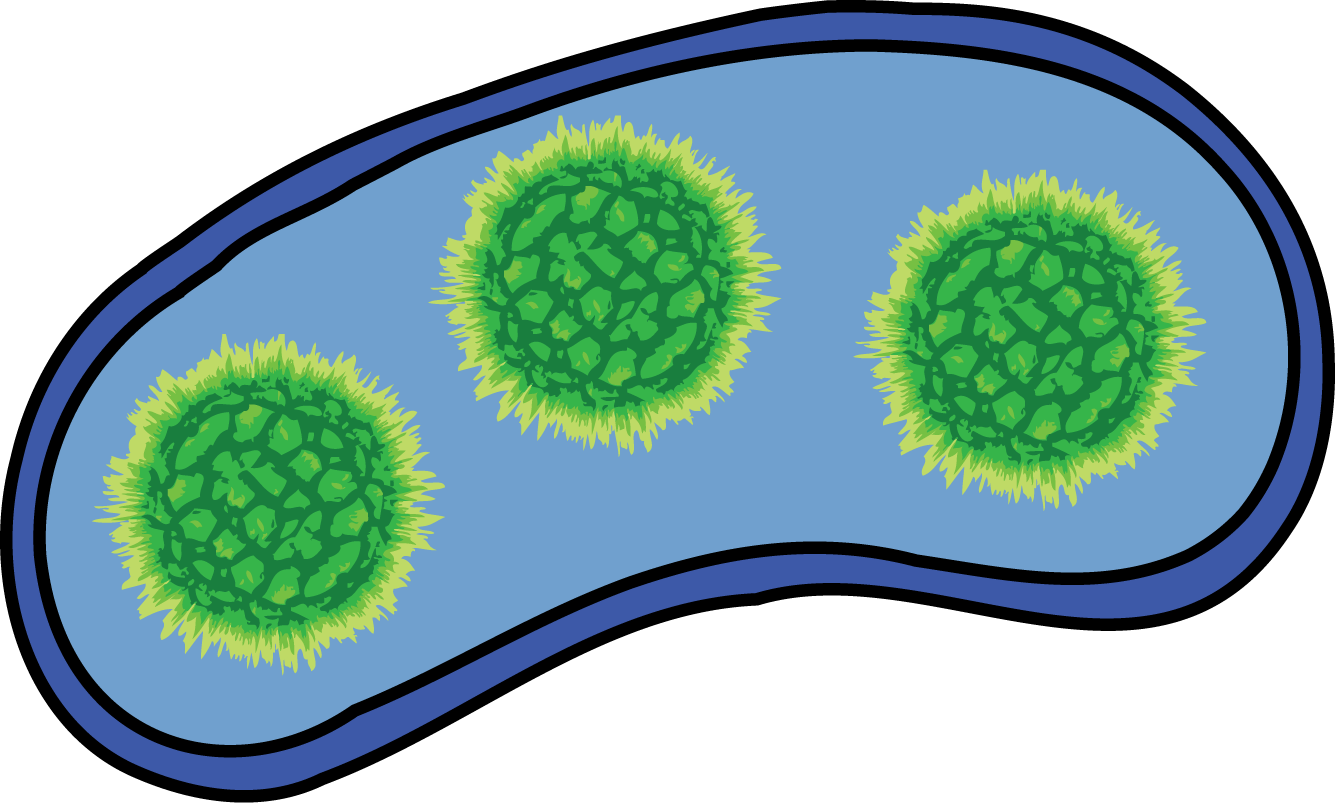 |
| Choanoflagellates naturally eat bacteria, so during normal digestion the choanoflagellate envelopes bacteria in a phagocytotic vesicle. | 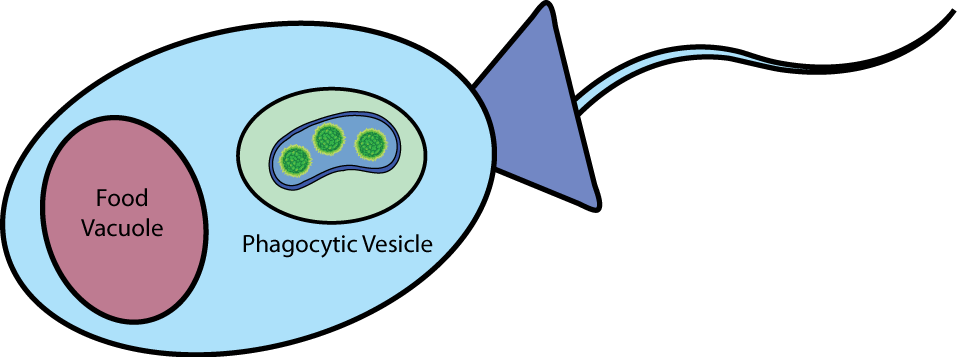
|
| This vesicle is then transported to choanoflagellate's food vacuole, where it merges with the vacuole. At this point the contents of the vesicle are exposed to the inside of the food vacuole and everything is destroyed, including the bacteria and all its contents. | 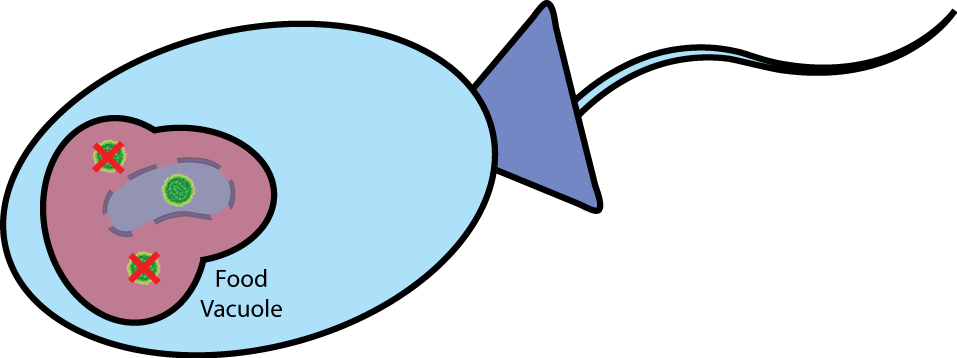
|
| In order to avoid being digested by the choanoflagellate our bacteria must be able to deliver the payload in the short time between ingestion and digestion. When the bacteria is in the phagocytotic vesicle, there are two barriers between our payload and the cytoplasm of the choanoflagellate, the bacteria's own membranes, and the vesicle membrane itself. Once our bacteria is engulfed by the choanoflagellate, and an inducer is added, it lyses itself using the Self-Lysis device derived from the 2008 UC Berkeley iGEM team. | 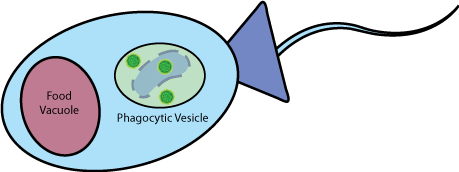
|
| At this point, the proteins being expressed by the bacteria will be released into the vesicle. Included in these proteins is the Vesicle-Buster device, which punctures the food vesicle membrane and releases the payload into the cytoplasm of the choanoflagellate. | 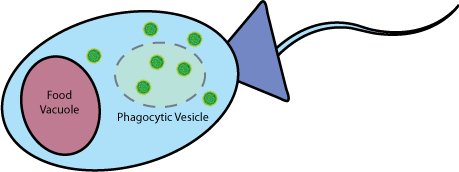
|
We are excited to report that we have been able to achieve successful delivery of GFP to the cytoplasms of choanoflagellates with a non-trivial rate of delivery. Visit our Results page for more information.
 "
"
